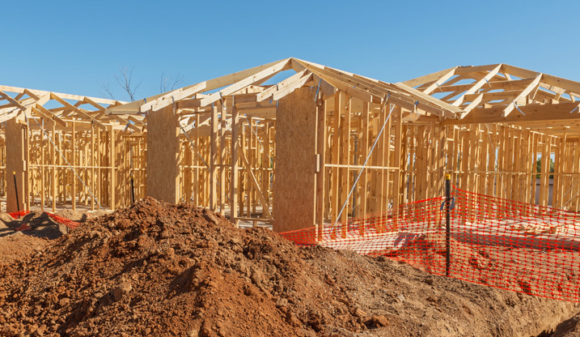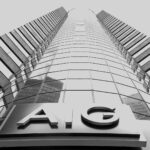This article is part of a sponsored series by Academy Journal.

Coverage Part A of the Commercial General Liability (CGL) policy is limited in scope, extending coverage to claims arising out of only bodily injury (BI) and/or property damage (PD). Couple Part A’s limited scope with the CGL form’s absolute pollution exclusion (“f.”) and expensive coverage gaps are created for most contractor risks.
Contractors’ Professional and Pollution Liability is the contractor’s coverage solution. Often referred to as either the Contractors Pollution and Professional Insurance, the Contractor’s Protective Professional Indemnity coverage, or simply CPPI, this multi-peril form addresses and closes most of the coverage gaps created by the combination of the limited breadth of protection provided by Coverage Part A and the pollution exclusion.
Coverage Part A’s Bodily Injury and Property Damage Coverage Gap
Every CGL extends protection when the insured contractor’s actions result in bodily injury or property damage to a third party – subject to specific exclusions. Many insurance practitioners stop here, believing the insured is adequately protected simply because it is not a “professional” (such as an architect or engineer). However, financial losses can be and often are caused by the actions (or inactions) of a “non-professional” contractor that do not arise out of or result from either bodily injury or property damage.
Consider the example of an HVAC contractor hired to design and install a heating and cooling system for a specialty manufacturing operation. Because of the product manufactured, a specialized ventilating system is required. During testing it is discovered that the system is not adequate and must be removed and replaced, delaying the opening and use of the facility – costing the manufacturer hundreds of thousands of dollars.
Because there is no bodily injury or property damage the cost to remove and replace the system is not covered by the CGL. Likewise, the loss of production income resulting from the delay is excluded by the CGL. This loss is solely the result of a design error. All costs associated with this incident are paid from the HVAC contractor’s financial resources.
Construction projects are not neat and tidy operations with a clear delineation of duties between professional services and construction duties (“non-professional” duties). As the project progresses and evolves, subcontractors may advise upper tier contractors regarding unexpected changes or how to solve unexpected problems. Such advising may cause financial loss that is not the result of bodily injury or property damage, but the result of an error in judgement.
The Pollution Exclusion Gap
Exclusion “f.,” referred to as the absolute pollution exclusion, removes coverage for most pollution losses. However, the exclusion contains exceptions that make it far less than absolute (unless the Total Pollution Exclusion (CG 21 49) is attached).
Several contractor-specific exceptions to the absolute pollution exclusion are found within Insurance Services Office’s exclusionary wording, but the protection is limited. These exceptions (giving back coverage) include:
- Coverage for BI or PD caused by the unintentional escape of fuels or lubricants from mobile equipment;
- Coverage for BI or PD sustained within a building caused by the release of gases, fumes or vapors from materials brought into the building by the contractor if in connection with the operations being performed;
- Coverage for BI or PD arising out of a hostile fire;
- BI and PD protection is extended to the contractor if the owner or lessee of the premises is an additional insured on the contractor’s policy and is sued for the actions of the contractor (a contractual risk transfer protection);
- BI and PD coverage is provided if the pollutant was not brought to the site by the contractor; and
- Coverage is provided for some completed operations claims.
Remember, these pollution-related coverage grants apply only if: 1) the exclusionary wording mimics ISO wording; or 2) the Total Pollution Exclusion endorsement his not attached. If proprietary wording is used, these coverage exceptions cannot be assumed; and if the CG 21 49 is attached, there is no pollution coverage granted by exception.
Even if the insured has this limited pollution coverage, important losses and costs are still excluded.
- No coverage is extended for pollution released outside of a building;
- No coverage exists to cover most clean-up costs;
- No coverage is available for pollution that escapes from the insured’s place of business;
- The CGL does not cover the pollution transportation risk;
- The business auto policy (BAP) excludes transportation of pollutants; and
- The CGL does not cover the storage or disposal of any pollutants.
Too many gaps exist for the contractor to depend on the CGL for protection.
The One Policy That Fills These Gaps
Contractors’ Professional and Pollution Liability (CPPI) coverage fills most of the gaps created by the limited breadth of Coverage Part A and the application of the pollution exclusion (even with the “give-back” exceptions). Four key coverages are combined into CPPI forms:
- Professional liability;
- Protective liability;
- Mitigation expense; and
- Pollution liability.
Professional Liability Coverage
Financial harm arising out of professional services conducted by or on behalf of the insured is covered by this policy section. “Professional service” can include design work, engineering work, construction management operations, or even services performed as part of the construction process such as shoring or dewatering.
Key provisions related to professional liability coverage include:
- The carrier generally pays on behalf of the insured;
- Coverage is subject to a self-insured retention (SIR);
- Protection is generally extended on a “claims made and reported” basis;
- Coverage applies only if an error or omission occurs after the retroactive date and before the end of the policy period;
- Coverage exists only if no “responsible party” (i.e. officer, director, owner, manager, insurance manager) had knowledge of the incident prior to the policy period; and
- The insured is protected for its own actions and for its vicarious liability for the actions of a contracted professional.
Protective Liability Coverage
Protective liability is vicarious liability coverage that protects the insured by:
- Providing excess coverage over the contracted design professional’s policy if its policy limits are insufficient;
- “Dropping down” to protect the insured if the design professional’s coverage is no longer available for any reason; and
- Acting as a difference-in-condition (DIC) coverage if the CPPI is broader than the underlying professional’s policy.
Mitigation Expense
Mitigation expense, or mistake coverage, is just what it sounds like – coverage for the cost of fixing a problem before it becomes a claim. The impetus for this coverage – cost. It is much cheaper to fix the problem during construction upon discovery of the “mistake” than when the construction is complete. Some policies use the term “rectification,” but the concept is the same.
Key components of this coverage include:
- The mitigation expense must arise out of professional services;
- The services must have occurred after the retroactive date and during the policy period;
- The insured must notify the carrier immediately; and
- All expenses must be approved by the carrier prior to being incurred.
Pollution Liability
Contractors’ pollution liability in the CPPI extends coverage for two types of pollution claims: 1) job site or operations pollution coverage; and 2) pollution damage emanating from the insured’s location.
Job Site/Operations Pollution Coverage
Unlike the limited pollution protection extended by the unendorsed CGL, the job site pollution coverage is rather comprehensive. Claims covered include:
- BI or PD resulting from the release of a pollutant;
- Damage to soil, water, air, animal life, and plant life caused by a pollutant;
- Release from a “non-owned” site used by the insured to treat, store, dispose of, recycle or process waste (pollutant) provided the site is licensed or approved for such use;
- Transportation coverage protecting the insured from pollution losses related to the transportation of a pollutant; and
- The cost to clean up, treat and restore damaged resources as a result of the release. Emergency clean-up costs are included. Protection for clean-up costs are limited and are covered only if:
-The pollution incident occurs on or after the effective date of the policy;-The pollution incident is discovered during the policy period; and-The pollution incident is reported to the carrier in writing during the policy period or extended period.
In addition to protection while operations are in process, the policy covers a release that occurs after the work is complete – completed operations pollution coverage.
Insured’s Location Pollution Coverage
Pollution claims emanating from the insured’s location are totally excluded by the CGL. However, these claims are covered by the CPPI. Claims covered by this section essentially mirror the types of releases extended protection under the job site pollution coverage with two key differences:
- The release must originate at the insured’s business location; and
- The release must cease within a certain number of days (varies by carrier).
Both job site and the insured’s location coverages are subject to the same specific provisions which include: 1) The BI, PD, or environmental damage must occur during the policy period; and 2) The claim must be made during the policy period.
Some carriers extend pollution coverage on an occurrence basis, but a few provide coverage on a claims-made and reported basis. When the form extends coverage on an occurrence basis, wording in the policy limits coverage to just one policy period to avoid the possibility that multiple policies could be called upon to respond (avoiding stacking of limits).
Coverage forms extending pollution coverage on a claims made basis follow the “normal” claims made protocol: 1) The claim must be made against the insured during the policy period or any extended reporting period; 2) The release must occur on or after the retroactive date; and 3) Prior to the effective date of the policy, the incident could not have been known to have occurred.
Although a contractor may not appear to provide “professional services” or have a significant pollution exposure, the gaps in the CGL and the realities of a construction project make the CPPI policy necessary.
Was this article valuable?
Here are more articles you may enjoy.




 AIG Announces Strategic Investment Partnership of Up to $3.5B With CVC
AIG Announces Strategic Investment Partnership of Up to $3.5B With CVC  Expense Ratio Analysis: AI, Remote Work Drive Better P/C Insurer Results
Expense Ratio Analysis: AI, Remote Work Drive Better P/C Insurer Results  LA Fire Survivors Got a Rude Surprise That Could Hit More Americans
LA Fire Survivors Got a Rude Surprise That Could Hit More Americans  Zurich Makes £7.7 Billion Bid for Specialty Insurer Beazley
Zurich Makes £7.7 Billion Bid for Specialty Insurer Beazley 



